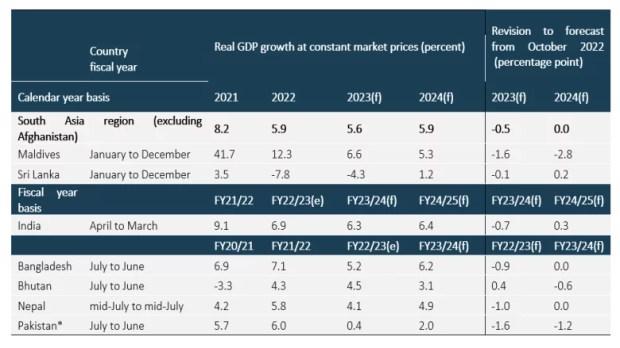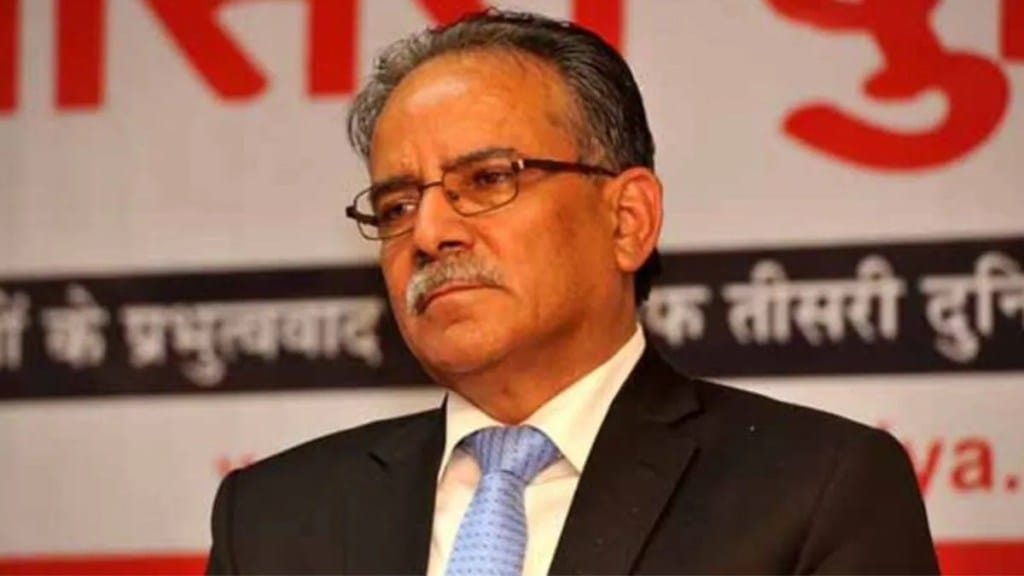Nepal Prime Minister Pushpa Kamal Dahal ‘Prachanda’ is making elaborate preparations ahead of his trip to India next month, saying he needs to do “homework” before embarking on the visit.
While the official date of his visit to India is yet to be announced, the corridors of South Block are buzzing with much anticipation.
Nepal has witnessed increasing political instability – and now with a fragile coalition government that has been in power for only a few months. The struggles for power among the main political parties are common. So much so that the Himalayan nation has had eight different governments in the past 10 years. Even the last national election in November left a hung parliament, leading to a government based on a fragile coalition led by Dahal.
Such fragility has become a routine of Nepali politics which has resulted in the economic downturn that the country faces today.
Then how will Pushpa Kamal Dahal’s talks with India unfold amid economic crisis and instability?
Fragile economy
The country of 30 million is also facing higher inflation and the Growth in Nepal this year will be slower than previously projected.
There are several factors which make the situation worrisome despite the resumption of tourism and remittances– the mainstay of its economy.
However, what led to the economic stagflation is due to the impacts of import restrictions, monetary policy tightening, and shrinking government expenditure reflecting lower government revenue.
According to the World Bank’s twice-a-year country update, Nepal’s economy is projected to grow by 4.1 percent in FY23 which is a downward revision from the October 2022 forecast.
However, risks are still higher for Nepal as the nation is still facing debt and payment issues. Even though the foreign exchange reserves climbed to $10.5 billion in mid-January 2023 from $9.5 billion in mid-July 2022, the stock covers 9.4 months of concurrent imports.
The economic woes continue to impact Nepal as the higher-than-expected inflation will dampen consumption and growth.
In such a scenario, the visit will be crucial for Dahal to secure greater cooperation and coordination with India. Not to mention that some of the contentious political issues will also be dragged into the agenda.

One of the key agendas for Nepal is to secure a long-term intergovernmental agreement for power transfer from Nepal to India. Currently, Nepal is allowed to sell 452.6MW of electricity generated by 10 hydropower projects in the Indian power markets. Energy cooperation with India has already boosted Nepal’s economy significantly. For the first time in history, Nepal has become an energy surplus and even started exporting power; Nepal sold power to India worth Rs 6 billion in 2022.
In addition, connectivity remains the finer aspect of Indo-Nepal bilateral relations with the completion of several transnational projects and many others are in the pipeline. The major flagship projects include the first-ever cross-border petroleum products pipeline in South Asia—from Motihari in India to Amlekhgunj in Nepal with a further plan of extending the pipeline to Chitwan in central Nepal, as well as constructing a new pipeline in eastern Nepal.
The Ministry of External Affairs of India has highlighted that cross-border connectivity projects, such as rail links, roads, and Integrated Check Posts (ICPs), are progressing well. According to the MEA official, there has been notable progress towards laying a 136-km broad gauge electrified railway line that will connect Kathmandu with Raxaul. This is marked as the flagship project.
India remains Nepal’s largest trade partner, with bilateral trade crossing US$ 7 billion in FY 2019-20.
Political correctness
While there is no clarity if the scale of dialogue extends to contentious issues, the expectations are high that prime ministers will deliberate on some of the core issues, including the Treaty of Peace and Friendship of 1950.
As intended both parties have agreed to revise the 1950 Treaty of Peace and Friendship. On 31 July 1950, India and Nepal signed a treaty of peace and friendship in an effort to “strengthen and develop these ties and to perpetuate peace between the two countries”.
As time passed, Nepal believed the treaty was “incompatible with national self-respect”.
“There are some issues under consideration,” said the former ambassador of Nepal to India on how important is the treaty for India-Nepal’s future bilateral relations.
Another key issue remains around the border dispute. As per the Sources at the Prime Minister’s Office, the issue of boundary dispute and its solutions will be part of the agenda during the upcoming visit of Prime Minister Dahal.
The country shares a border of more than 1,850 km with five Indian states – Sikkim, West Bengal, Bihar, Uttar Pradesh, and Uttarakhand. The border issues flared up during Oli’s government which was often seen tilted towards China.
“We have mostly a settled border with only a minuscule size of territory under dispute,” said a former diplomat, adding, “That must be resolved soonest as it will impact our historical relations.”
India provides transit for almost the entire third-country trade of Nepal and continues to extend and prioritize development assistance to Nepal through various grants and loans.
India’s ‘Neighbourhood First’ policy is an integral component of Indian foreign policy and Indo-Nepal talks will be the cornerstone of its policies.

